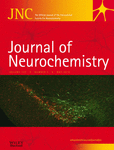Journal list menu
Export Citations
Download PDFs
Issue Cover
Issue Cover (May 2016)
- First Published: 18 April 2016
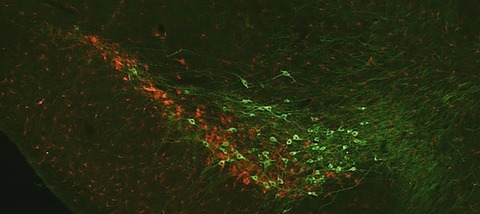
Front cover: The gut hormone ghrelin is neuroprotective in Parkinson's Disease. However, ghrelin exists in two distinctive isoforms (acylated and des-acylated ghrelin). This representative image shows dopamine neurons (green) and microglial activation (red) in response to the MPTP model of Parkinson's Disease. We show that acylated ghrelin is the isoform responsible for in vivo neuroprotection of ghrelin in the MPTP model of Parkinson's Disease by minimising dopamine cell loss and attenuating glial activation. Overall, we show that acylated ghrelin is an ideal therapeutic target to reduce Parkinson's Disease progression.
Read the full article ‘Acylated but not des-acyl ghrelin is neuroprotective in an MPTP mouse model of Parkinson's disease’ by J. A. Bayliss, M. Lemus, V. V. Santos, M. Deo, J. D. Elsworth and Z. B. Andrews (J. Neurochem. 2016, vol. 137 (3), pp. 460-471) on doi: 10.1111/jnc.13576
Issue Information
EDITORIAL HIGHLIGHT
miR-186 in Alzheimer's disease: a big hope for a small RNA?
- Pages: 308-311
- First Published: 30 March 2016

This Editorial highlights a study by Kim et al. in the current issue of Journal of Neurochemistry, in which the authors demonstrate that miR-186 is a potent negative regulator of BACE1 and might be one of the molecular links between advanced brain aging and the increased risk for Alzheimer disease.
Read the highlighted article ‘miR-186 is decreased in aged brain and suppresses BACE1 expression’ on page 436.
REVIEW ARTICLES
Dynamic DNA methylation controls glutamate receptor trafficking and synaptic scaling
- Pages: 312-330
- First Published: 05 February 2016
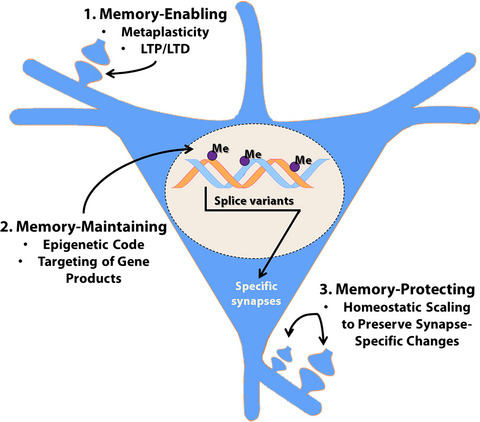
This review describes exciting recent work that has demonstrated a role for active changes in neuronal DNA methylation and demethylation as a controller of synaptic scaling and glutamate receptor trafficking. These findings bring together three major categories of memory-associated mechanisms that were previously considered separately: glutamate receptor trafficking, DNA methylation, and homeostatic plasticity.
The contribution of alpha synuclein to neuronal survival and function – Implications for Parkinson's disease
- Pages: 331-359
- First Published: 06 February 2016
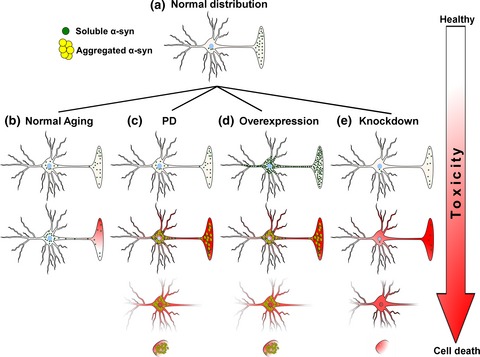
The correlation between α-synuclein burden and Parkinson's disease pathology has led to the hypothesis that α-synuclein aggregation produces toxicity through a gain-of-function mechanism. However, in this review, we discuss data supporting the alternative hypothesis that the aggregation of α-synuclein results in toxicity because of loss of necessary α-synuclein function at the presynaptic terminal, following sequestration of functional forms of α-synuclein into aggregates.
ORIGINAL ARTICLES
Gene Regulation & Genetics
Reduced glutathione biosynthesis in Drosophila melanogaster causes neuronal defects linked to copper deficiency
- Pages: 360-370
- First Published: 06 February 2016
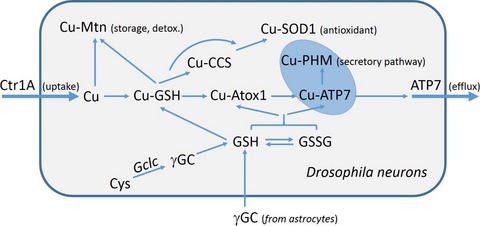
We provide genetic evidence that glutathione (GSH) levels influence Cu content or distribution in vivo, in Drosophila neurons. GSH could be required for binding Cu imported by Ctr1A and distributing it to chaperones, such as Mtn, CCS and Atox1. Alternatively, GSH could modify the copper-binding and transport activities of Atox1 and the ATP7 efflux protein via glutathionylation of copper-binding cysteines.
High glucose-induced oxidative stress represses sirtuin deacetylase expression and increases histone acetylation leading to neural tube defects
- Pages: 371-383
- First Published: 20 February 2016
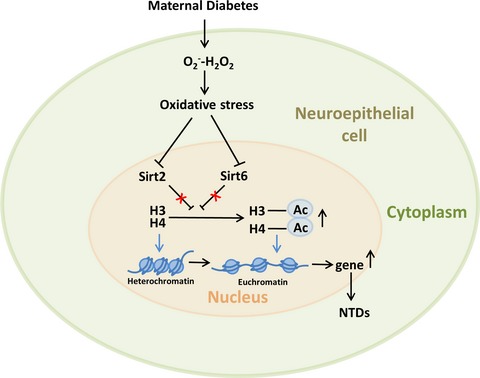
The mechanism underlying pre-gestational diabetes-induced neural tube defects (NTDs) is still elusive. Our study unravels a new epigenetic mechanism in which maternal diabetes-induced oxidative stress represses sirtuin deacetylase 2 (SIRT2) and 6 (SIRT6) expression leading to histone acetylation and gene expression. SIRT down-regulation mediates the teratogenicity of diabetes leading to (NTD) formation. The study provides a mechanistic basis for the development of natural antioxidants and SIRT activators as therapeutics for diabetic embryopathy.
Signal Transduction & Synaptic Transmission
Pituitary Adenylate cyclase-activating polypeptide orchestrates neuronal regulation of the astrocytic glutamate-releasing mechanism system xc−
- Pages: 384-393
- First Published: 06 February 2016
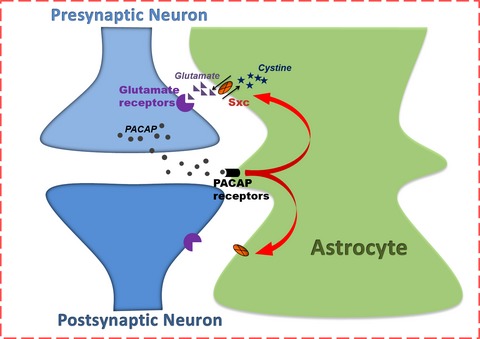
A critical gap in modeling excitatory signaling is how distinct components of the glutamate system expressed by neurons and astrocytes are coordinated. In these studies, we found that system xc− (Sxc), a glutamate release mechanism expressed by astrocytes, is regulated by releasable neuronal factors including PACAP. This represents a novel form of neuron–astrocyte communication, and highlights the possibility that pathological changes involving astrocytic Sxc may stem from altered neuronal activity.
Regulation of different human NFAT isoforms by neuronal activity
- Pages: 394-408
- First Published: 06 February 2016
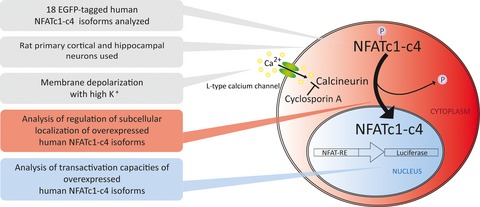
We show that the effects of calcium signaling on the action of NFAT proteins are isoform-specific and differ between cell types. Although nuclear localization of all NFAT isoforms in neurons requires calcineurin, the subcellular distributions, neuronal activity-induced nuclear translocation extent and kinetics, and transcription activation capacities of alternative NFAT proteins vary.
Neuroinflammation & Neuroimmunology
Low-dose, continuous enzyme replacement therapy ameliorates brain pathology in the neurodegenerative lysosomal disorder mucopolysaccharidosis type IIIA
- Pages: 409-422
- First Published: 13 January 2016

Clinical trials of repeated injection of replacement enzyme into CSF are underway in patients with the inherited neurodegenerative disorder mucopolysaccharidosis type IIIA. In this pre-clinical study, we examined an alternative approach – slow, continual infusion of enzyme using pumps. We observed significant reductions in substrate accumulation and other disease-based lesions in treated mouse brain. Thus, the strategy warrants consideration for testing in large animal models of MPS IIIA and also in other neurodegenerative lysosomal storage disorders.
Elevation of cortical serotonin transporter activity upon peripheral immune challenge is regulated independently of p38 mitogen-activated protein kinase activation and transporter phosphorylation
- Pages: 423-435
- First Published: 29 February 2016
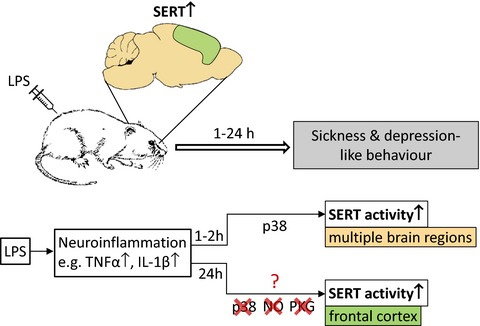
Peripheral injection of lipopolysaccharide (LPS) induces characteristic sickness and depression-like behaviour in rats over a period of at least 24 h. We show here that the activity of the serotonin transporter (SERT), a prominent antidepressant target, is up-regulated 24 h following LPS administration. In contrast to previous studies focusing on earlier responses to LPS treatment, we found that SERT function is selectively enhanced in the frontal cortex, independently of the p38 MAPK pathway. Our study provides further insight into molecular mechanisms underlying inflammation-induced depression.
HIGHLIGHTED ARTICLE
ORIGINAL ARTICLES
Molecular Basis of Disease
miR-186 is decreased in aged brain and suppresses BACE1 expression
- Pages: 436-445
- First Published: 28 December 2015
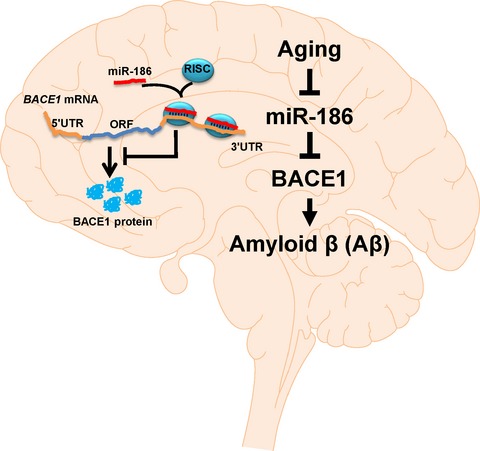
We identified that miR-186 levels are gradually decreased in mouse cortices during aging. Furthermore, we demonstrated that miR-186 is a novel negative regulator of beta-site amyloid precursor protein-cleaving enzyme 1 (BACE1) expression in neuronal cells. Therefore, we proposed that reduction in miR-186 levels during aging may lead to the up-regulation of BACE1 in the brain, thereby increasing a risk for Alzheimer's disease in aged individuals.
Read the Editorial Highlight for this article on page 308.
ORIGINAL ARTICLES
Molecular Basis of Disease
Conventional protein kinase Cβ-mediated phosphorylation inhibits collapsin response-mediated protein 2 proteolysis and alleviates ischemic injury in cultured cortical neurons and ischemic stroke-induced mice
- Pages: 446-459
- First Published: 20 January 2016
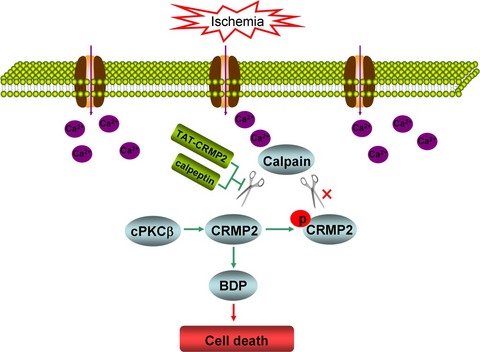
Focal cerebral ischemia induces a large flux of Ca2+ to activate calpain which cleaves collapsin response mediator (CRMP) 2 into breakdown product (BDP). Inhibition of CRMP2 cleavage by calpeptin and TAT-CRMP2 alleviates ischemic injury. Conventional protein kinase C (cPKC)β-mediated phosphorylation could inhibit CRMP2 proteolysis and alleviate ischemic injury in cultured cortical neurons and ischemic stroke-induced mice.
Acylated but not des-acyl ghrelin is neuroprotective in an MPTP mouse model of Parkinson's disease
- Pages: 460-471
- First Published: 12 February 2016
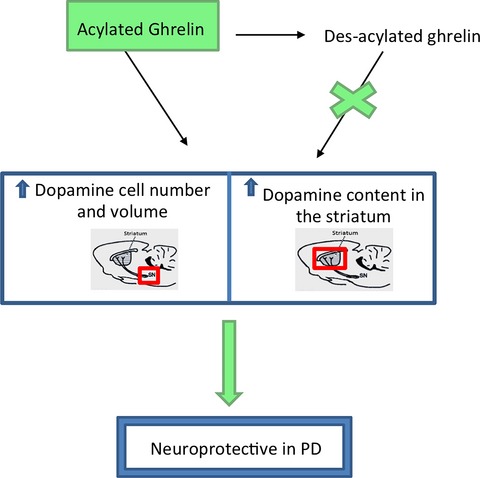
Ghrelin exists in the plasma as acyl and des-acyl ghrelin. We determined the form responsible for in vivo neuroprotection in a mouse model of Parkinson's disease. Although exogenous acyl ghrelin is deacylated in situ to des-acyl, only acyl ghrelin was neuroprotective by attenuating dopamine cell loss and glial activation. Acyl ghrelin is a therapeutic option to reduce Parkinson's Disease progression.
Cover Image for this issue: doi: 10.1111/jnc.13316.




